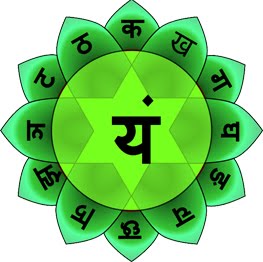1.- Introduction to the Oyster Posture
Oyster Pose is a variant of Kurmasana, “The Tortoise Pose.” Its name in Sanskrit is Hasta Pada Baddha Asana: HASTA (hand) PADA (foot) BADDHA (tied) ASANA (posture), that is, posture of the hands and feet tied. However, to Western practitioners it is better known as the Oyster Pose.

(Note: it should be noted that finding the Sanskrit name of this asana has been an arduous search comparing and reading various information found on blogs, entries, etc. in different languages. However, we have not found the full translation as such, so we have had to translate it word by word from Sanskrit to Spanish, therefore, we do not guarantee that it is a 100% correct translation).
2.- How to do the oyster pose
2.1.- What you should take into account before starting
This is a forward bend pose, but it is not a variant of Seated Clamp Pose, Paschimottanasana.
In the case of Paschimottanasana, one of the purposes is to stretch the spine. While through the oyster pose, we do not stretch the spine, but simply lean forward, and therefore its effects are clearly different from the claw pose.
2.2.- The starting position
First, sit on the floor with your legs stretched out in front of you. Firmly place the soles and bend the knees, so that the projection of the legs on the ground forms a rhombus.

2.3.- The first stage
Next, insert your arms through this “diamond”, allowing them to slide under your knees so that your palms are on the outer side of your soles.

Above all, the elbows touch the ground. The distance between the perineum and the heels depends on the constitution of each person.
2.4.- Stage two
Before entering this asana, it is advisable that we make sure that all the muscles of the hips and legs are relaxed. In this way, the effects of this asana on the joints and legs will be more powerful.
Second, lean into several smaller movements, but not all at once. Bring your head closer to the ground with each exhalation.

Finally, in the case of a perfect execution of this asana, the forehead touches the ground and the heels touch the crown of the head. Stay in this position as long as possible, without straining. Take a deep, calm breath.

3.- Kurmasana power Anahata Chakra
Using Yoga to open the Chakras is a method by which we achieve inner peace and harmony. The Chakras are an element of our physical and energetic body, which we must take into account if we work on our spirituality and modulate our mind.
We will see this activation work reflected in a better physical and mental sensation, and in a better attitude towards ourselves and towards everything around us.

“Anahata Chakra representa el centro de nuestro Ser. De este centro de poder donde se ubica el corazón, emana el sentimiento de Amor más puro y sincero, y es la puerta de acceso a Diós.”
Enmanuel Torras Mata
The fourth Chakra is Anahata, associated with the color green and the element of Air; It is the intermediate Chakra between the upper and lower Chakras. The heart resides in Anahata, and from this center emanate the purest and most sincere feelings of Love, without form or limits. Its openness opens us to a higher experience of our own life, and encourages us to maintain a more spiritual life.
4.- Focus
Focus on perceiving the activity of the subtle energy center Anahata Chakra, deep interiorization.
Feel the awakening and increase of divine love within you. The body becomes a shell that silently holds within it the pure white pearl of the immortal Self, whose eternal presence we now perceive.
5.- Effects of the oyster position
The main effects of this asana are felt mainly in the spine and also in the joints. In summary, the beneficial effects are:
First of all, the special action on the spine leads to relaxation of the spinal nerve roots and tones the entire body. The spinal fluid pressure is modified and therefore this influence is beneficial.
Also, the femoral joints are very important. In general, people start thinking about these joints only when there are pains related to them.
Any decrease in the mobility of the joints generates suffering. The oyster pose acts on these joints, making them mobile and elastic.
Oyster Pose also puts a new and unusual strain on the knees; therefore, the influence of the knees is highly beneficial. This asana is also a very good preparation for the lotus position, Padmasana.

1 comentario
This article actually helped me with a report I was doing. Leandra Bartholomew Ful